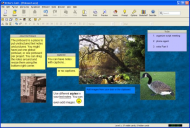After the suggestion from KodeZverg, I started looking at Draw.io, which was quite easy and intuitive. Diagram software rather than mindmap, so no outlining or import/export that isn't visual. When I first looked on my tablet, it didn't seem to work very well but it was fine on Windows (I'd note that this is true for the web version of Mindomo too); can be attached to Drive, Dropbox etc as well as local drive option so multi-device sync and availability is there. Shapes and arrows, colours, templates. Passes my quick and simple test and joins my list for trying on my project.
I started by looking at Bubbl.us - I was interested to see what it was like. But didn't grab me at all. Then tried many alternatives. All had faults that made them worse than using a pen and paper:
- insufficiently intuitive
- too inflexible
- visuals poor, making it hard to see what is going on
- too much effort required to make them function as desired.
I had expected that having the ability to create more impactful mindmaps would constitute a sufficient advantage for at least one of the programs to outdo pen and paper. It's not as if many of them are cheap; Bubbl.us has a free tier but its functionality is limited and only 3 elements allowed. And like many of them it then went to $5 a month. Might be okay if used regularly, but not cheap, and that is standard pricing for the multiplatform web apps. I'd probably be mostly Android, which would be cheaper, but I still didn't see anything giving the advantage I'd need over pen and paper. Far too much work required for them to be helpful with reorganisation.
So I decided to discount the category completely, though I'd be happy to look again if there's a strong recommendation for one program.
Of course, it could be a completely different story if we use a more powerful mind mapping program extensively as part of our writing workflow. If that were the case, then it
ought to be easy to look at the the main mindmap to look for clues to what could be done to make things work better.
Maybe I ought to look at at some of the better programs to see see how well they would work. The downside is the cost: they are mostly subscription and not cheap; I doubt if free works well enough, from what I remember. Hmmm.
No, of course I should. I have always known that this type of visual approach would work best for me in many areas, but nothing ever has in practice. Pure mindmapping doesn't work with its central node - that makes it just a visual outliner, and text outliners don't work for me either: I need multiple links and multiple starting points. Diagramming works, but it's only a visual overview - the link with text, notes etc is still required in practice.
So back to my eternal quest to find a mindmapping/diagramming program that suits me. If it's good enough price won't matter. Cross platform is essential, web might do. Interoperability is essential, preferably linking with .txt and/or .md files. Easy is also needed - too complex and much of the effort expended is producing little gain in output.
(I note that this is an interesting comment on the Obsidian graphing, which I don't use much; what I'd really like is a graph view where I can draw the graph and the notes and links are then created. I will check to see what already exists in that way.)
Maybe a second best will do.
But using a new creative framework still doesn't address the need identified in this review.


 Recent Posts
Recent Posts